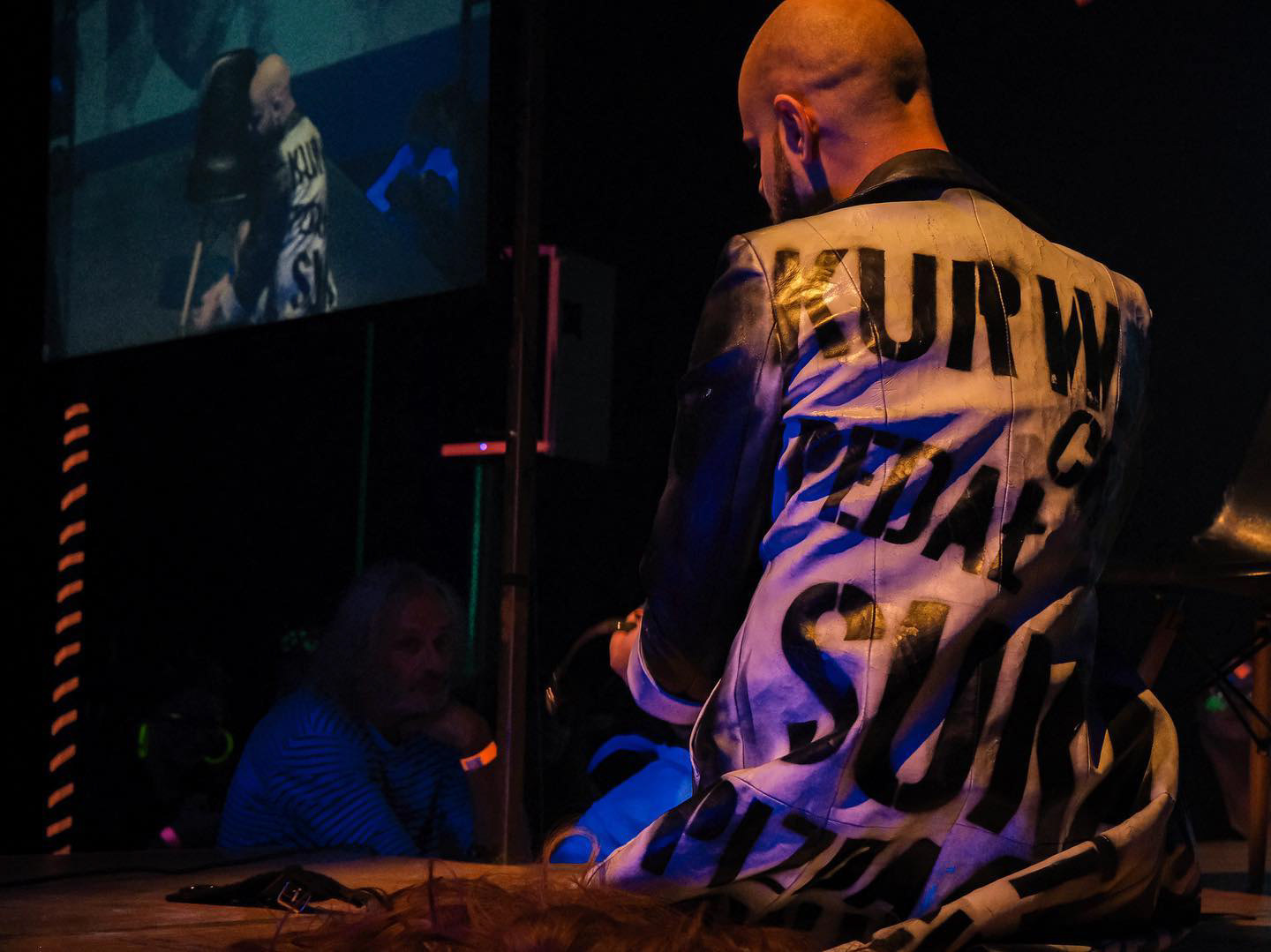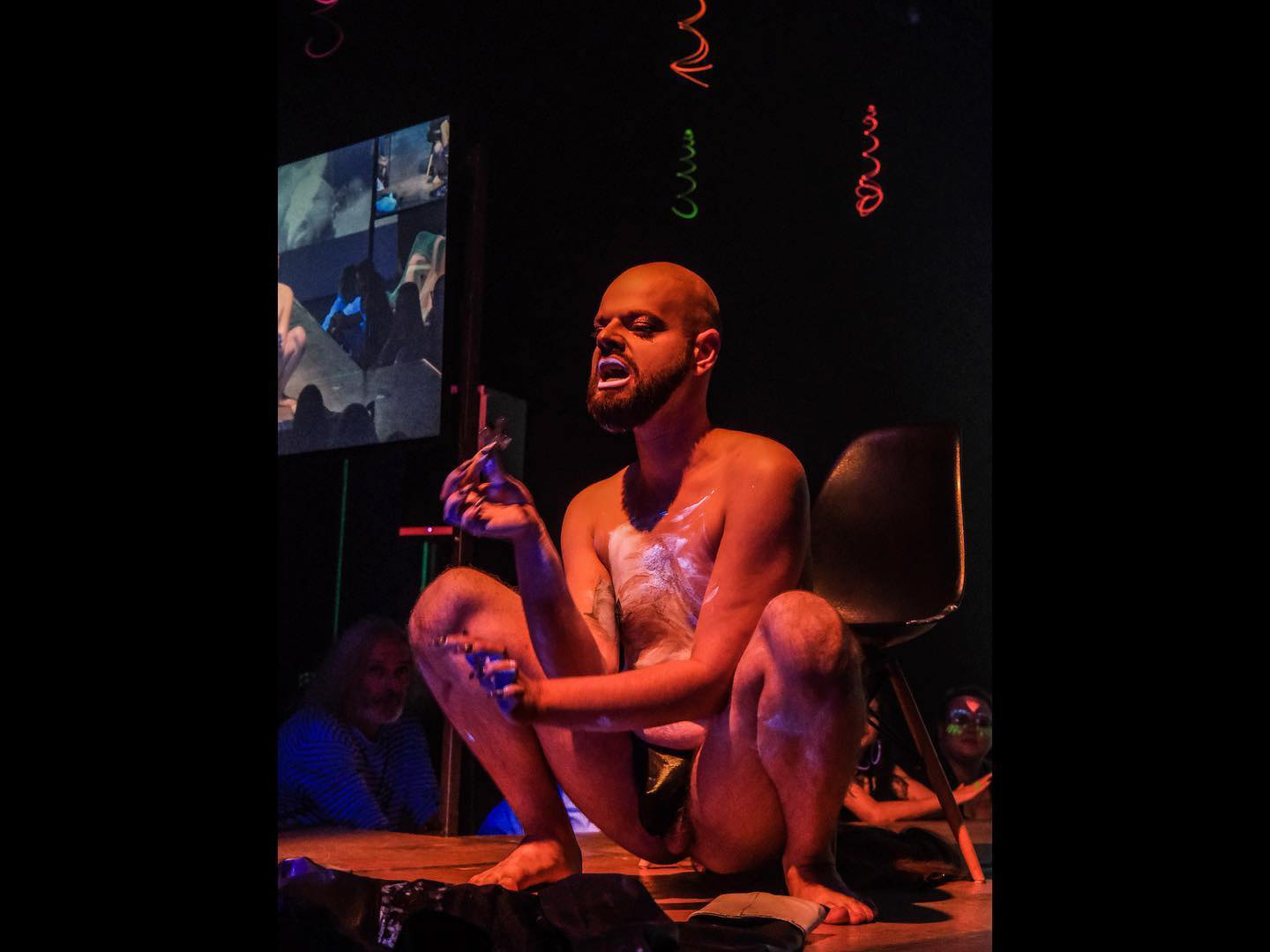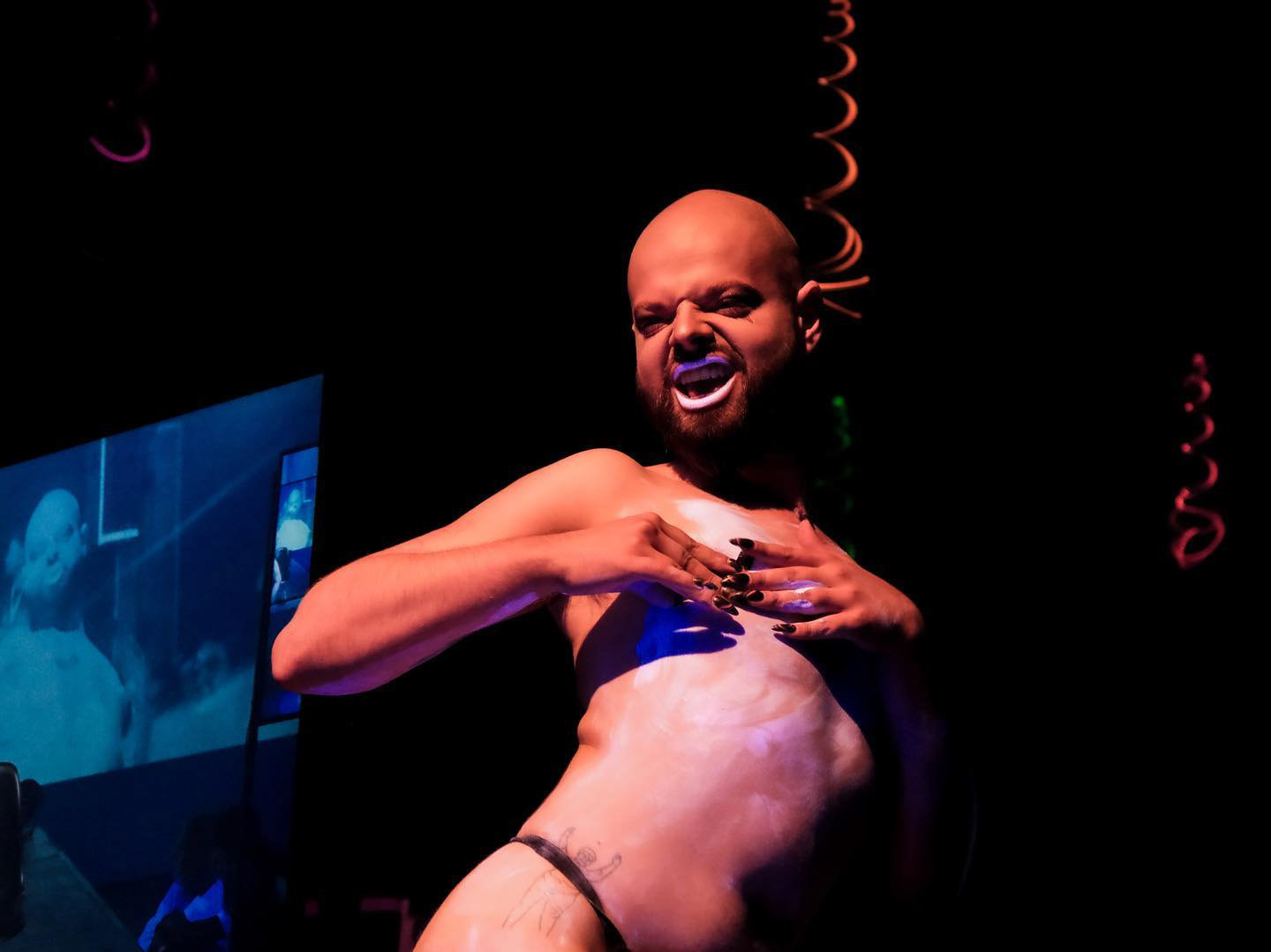




Human Nature reverses the logic of striptease. It begins with the naked body — exposed, unprotected, already vulnerable — and moves slowly toward concealment. Each new layer of clothing subverts the expected arc of revelation. The performance unfolds in reverse: not toward climax, but toward armor.
Drawing on the visual language of BDSM — chains, leather, a gag ball — and laced with references to pop iconography, especially Madonna’s Erotica and Human Nature, the piece plays at the edge where pleasure becomes politics. But here, sexuality isn’t offered as spectacle. It’s reclaimed as power. Human Nature interrogates the structures that regulate queer visibility, asking: Who controls the terms of exposure? Who owns the image of the queer body?
As the performer moves from nudity into leather and lace, a transformation occurs — not into fantasy, but into resistance. The garments are marked with slurs, insults, verbal wounds turned into visual language. The body wears its history. Clothing becomes both injury and shield — each word stitched into the fabric, each layer speaking to trauma, survival, and the violence of being seen.
Surveillance-style live footage runs in parallel, exposing the constant performance required of queer bodies under the gaze of power. The viewer is placed in the position of monitor, voyeur, judge — and then destabilized. The act of dressing, rather than concealing, becomes a radical form of self-definition. This is not about modesty or shame. It’s about control. About rewriting the gaze.
Chains and restraints — objects typically read as tools of submission — slowly mutate. They begin to carry weight, not of bondage, but of autonomy. The gag ball, meant to silence, becomes an instrument of assertion. It demands the audience listen without explanation, engage without entitlement. The body no longer pleads to be understood. It asserts itself, silent but sovereign.
The performance builds not to climax, but to refusal. Fully clothed, the performer denies the audience their expected release — there is no nudity to consume, no vulnerability to fetishize. The final image is one of confrontation. The gaze is returned. The viewer, expecting to possess, is possessed.
Human Nature is not simply a performance of sexual liberation. It is a confrontation with the long history of queer hypervisibility and the violence embedded in being watched. It is a reckoning with how exposure can wound — and how it can also shield. Vulnerability and power are not opposites here. They are entangled.
In this performance, dressing becomes a strategy of disarmament. Exposure becomes a refusal. The body, marked, dressed, framed — does not collapse under the gaze. It redirects it. It weaponizes it. It asks the viewer not just to look, but to question why they are looking — and what they expect to find.